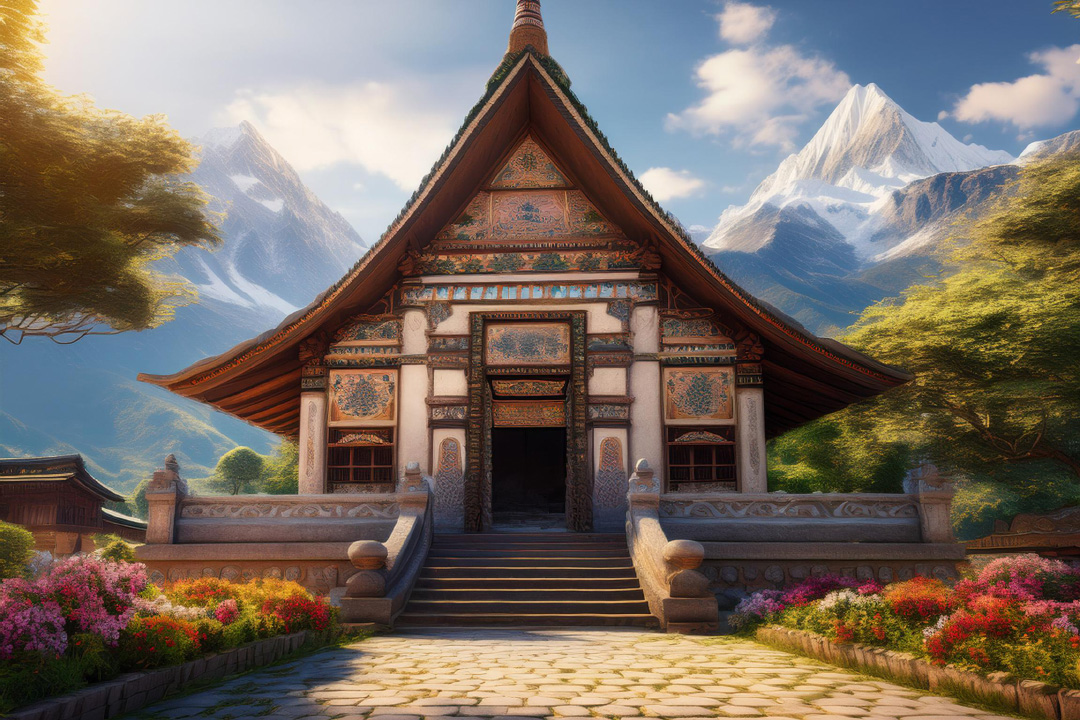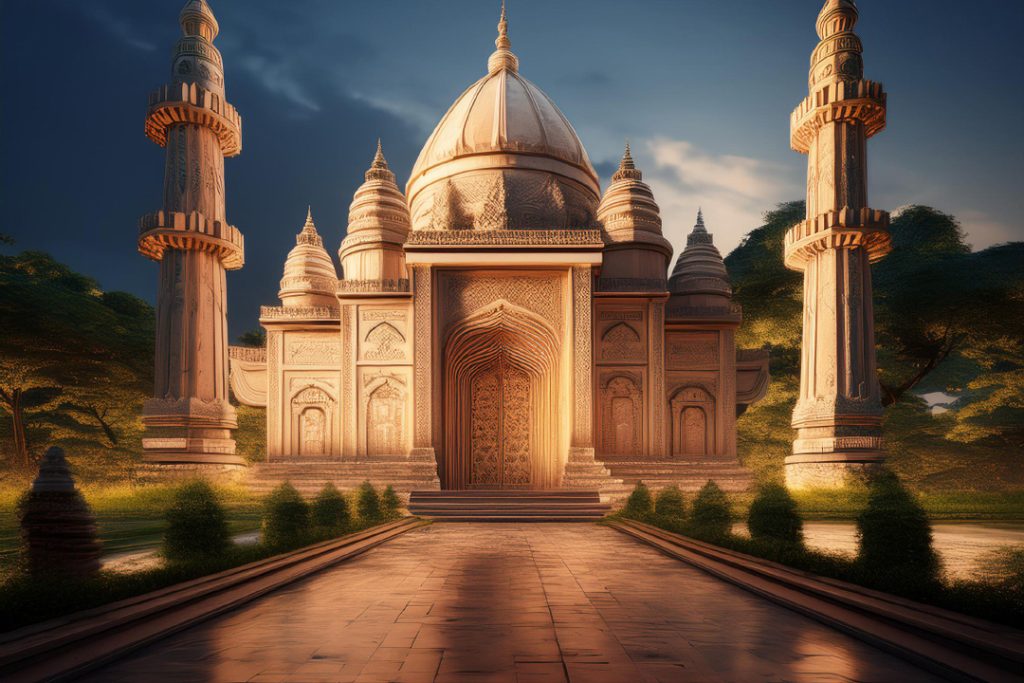Holding Onto Cultural Heritage
Understanding and appreciating your cultural heritage isn’t just useful; it’s what keeps society grounded. Let’s dive into what cultural heritage really means and why preserving it matters.
What Exactly Is Cultural Heritage?
Cultural heritage is all the stuff passed down from the past – like traditions, customs, and artifacts. It’s what makes a community unique, showing off its history and identity. Cultural heritage comes in two main flavors:
- Tangible Cultural Heritage: The physical stuff like monuments, buildings, artworks, and historic places.
- Intangible Cultural Heritage: The more touchy-feely stuff like music, dance, stories, languages, and rituals.
Grasping these categories helps you get why cultural heritage is such a big deal and how it impacts our lives.
Why Bother Preserving Cultural Heritage?
Keeping cultural heritage alive is important for a bunch of reasons. It helps you feel connected to your past, making sure future generations get to know their roots and values. It also preserves the amazing variety of human culture, helping us all appreciate different traditions.
Here’s a simple breakdown of why preserving cultural heritage matters:
| Why It’s Important | What It Means |
|---|---|
| Sense of History | Helps you understand where you come from and your community’s story. |
| Passing on Knowledge | Makes sure traditions, customs, and values aren’t forgotten by younger folks. |
| Cultural Diversity | Keeps the world’s cultural expressions and practices varied and interesting. |
| Fostering Understanding | Builds respect and appreciation for different cultures. |
Want to learn more about why saving cultural heritage is so crucial? Check out our article on UNESCO’s Efforts to Protect Heritage.
Holding on to and cherishing cultural heritage means paying respect to the past, enriching our present lives, and ensuring a bright future. The efforts we make today mean future generations will understand and appreciate their cultural roots, and society will continue to grow by staying connected to its heritage.
Why Cultural Heritage Matters
Identity and Connection
Cultural heritage shapes who we are and where we come from. Traditions, arts, languages, and histories define our communities. Engaging with cultural heritage helps us connect with our roots, fostering a sense of pride and self-worth. It also keeps our community’s unique traits alive, setting us apart from the rest.
Knowing your cultural heritage gives you a link to your past and creates a shared history that brings people together. This collective memory strengthens a community’s sense of identity and belonging. Want to dig deeper into what cultural heritage means? Check out our article on cultural heritage definition.
Passing Down the Wisdom
Cultural heritage isn’t just old stuff; it’s knowledge, customs, and values passed from one generation to the next. This wisdom gets shared through stories, rituals, and traditions. These elements are like life lessons, teaching young folks about their history, moral values, and why it’s important to keep their heritage alive.
Passing down this knowledge ensures that cultural practices stay vibrant and meaningful. It helps kids understand their community’s achievements and struggles, so they can learn from the past and use that wisdom today. Schools play a big role here by weaving cultural heritage into their lessons. Curious about how this works? Head over to our section on integration of cultural heritage in the curriculum.
Embracing Diversity and Global Connections
Our cultural heritage adds to the world’s rich tapestry, encouraging respect and understanding among different communities. It helps us celebrate our own culture while also valuing the traditions of others. By embracing cultural diversity, societies can promote tolerance, empathy, and global harmony.
This celebration of diversity comes alive in various global initiatives, like UNESCO’s efforts to protect and celebrate world heritage sites. These projects highlight how crucial it is to preserve cultural landmarks and traditions for future generations. Interested in UNESCO’s work with cultural heritage? Dive into our topic on unesco cultural heritage sites.
In a nutshell, cultural heritage is vital for shaping identity and belonging, passing down knowledge and values, and promoting cultural diversity and global understanding. By valuing and preserving cultural heritage, we build stronger, more inclusive communities and honor the legacy of those before us.
Keeping History Alive
UNESCO and Cultural Heritage
UNESCO (yep, that’s the United Nations Educational, Scientific and Cultural Organization) is all about keeping our world’s cultural treasures safe and sound. They’ve been at it for years, with the goal of promoting peace and understanding through collaboration in education, science, and culture. Think of UNESCO as the guardian of humanity’s coolest historical hangouts.
One of UNESCO’s slickest moves is the World Heritage List. This list shines a light on spots and stuff that hold immense cultural and natural value. These places aren’t just rocks and ruins; they tell the stories of our past and are protected and supported globally.
| Type | Number of Sites |
|---|---|
| Cultural | 897 |
| Natural | 218 |
| Mixed | 39 |
Besides the must-see physical sites, UNESCO also treasures the intangible bits of our culture—like those quirky traditions, rituals, and cultural practices that granny passed down. This Intangible Cultural Heritage List is key to keeping cultural variety alive and kicking.
Curious about more UNESCO wonders? Check out our detailed article on UNESCO cultural heritage sites.
The Hurdles in Preserving Cultural Heritage
Saving cultural heritage ain’t a cakewalk. Natural disasters like earthquakes and floods can swoop in and wreck history in a heartbeat. And don’t get started on climate change—it brings rising sea levels and wild weather that’s putting many historical spots in deep trouble.
Humans also make things tricky. Cities are sprawling, and factories are popping up everywhere, often messing with heritage sites. Sometimes, the drive for economic progress means historical gems get left in the dust.
Throw wars and conflicts into the mix, and you’ve got another layer of trouble. Bombings and fights can smash historical sites either by accident or on purpose. It’s heart-wrenching when cultural heritage is targeted to wipe out a community’s identity.
| Challenge | Impact |
|---|---|
| Natural Disasters | Damage to buildings and artifacts |
| Climate Change | Flooding and extreme weather issues |
| Urbanization | Wiping out historic sites |
| Armed Conflicts | Direct destruction or collateral hits |
So, how do we fight these threats? It’s a combo of legal rules, getting communities involved, and teaming up internationally. By tackling these problems, we can keep our cultural heritage safe for our kids and their kids.
Want to dig deeper into why preserving cultural heritage is a big deal? Don’t miss our article on the importance of cultural heritage.
Celebrating Cultural Heritage
Celebrating cultural heritage isn’t just about keeping traditions alive; it’s about bringing people together and showing off the wonderful quirks that make every culture unique. Our routines, arts, and celebrations all pass the torch to the next generation.

Festivals and Cultural Events
Festivals and cultural events are like the ultimate family reunions where everybody brings their best stories, food, and dance moves. They’re the heartbeat of cultural heritage, popping up all year to remind us of our roots and shared stories. They often highlight historical milestones, religious rites, and seasonal shifts, making them more than mere parties—they’re rich with cultural significance.
Here are some standout cultural festivals:
| Festival | Country of Origin | What It Celebrates |
|---|---|---|
| Diwali | India | Festival of Lights, celebrating victory of light over darkness |
| Day of the Dead | Mexico | Honors departed loved ones with offerings and celebrations |
| Carnival | Brazil | Pre-Lent fest famous for its parades and flamboyant costumes |
| Chinese New Year | China | Rings in the new lunar year with feasts and rituals |
These events are more than just huge celebrations; they’re ways to pass down knowledge, customs, and values to the younger folks. They give everyone a chance to dive deep into their culture and appreciate the incredible diversity it brings. Curious about all the ins and outs of cultural heritage? Check out our article on what cultural heritage really means.
Traditional Practices and Rituals
Traditional practices and rituals are like the secret sauce of cultural heritage. From religious ceremonies to traditional cooking methods, music, dance, and craftsmanship, these rituals often hold meanings that go way back. They’re not just activities; they’re a lifeline to the past.
Here are some classic traditional practices and rituals:
- Tea Ceremonies: In Japan and China, tea ceremonies are an art form, all about harmony, respect, and peace.
- Storytelling: Oral traditions keep history, folklore, and life lessons alive, essential for passing on cultural knowledge.
- Craftsmanship: Skills like pottery, weaving, and metalwork are often handed down through generations, preserving unique techniques and artistry.
| Practice/Ritual | Culture/Region | Why It Matters |
|---|---|---|
| Japanese Tea Ceremony | Japan | Focuses on mindfulness and etiquette |
| Maasai Jumping Dance | Kenya/Tanzania | Part of traditional initiation rites |
| Flamenco Dancing | Spain | Tells cultural stories through dance and music |
| Indigenous Pottery | Native American Tribes | Reflects cultural narratives and functional artistry |
Joining in on these practices isn’t just about doing something cool. It’s about finding your tribe, feeling like you belong, and valuing cultural diversity. Want to dive into more about cultural heritage? Peek at our deep dive on UNESCO cultural heritage sites
Keeping festivals and traditions alive is like keeping the family tree growing strong. These activities promote understanding, respect, and continuity, making sure every unique cultural story gets told and celebrated.

Role of Education: Teaching Cultural Heritage
Education’s role in celebrating cultural heritage is huge. It’s about helping students of all ages understand and appreciate diverse cultures.
Bringing Cultural Heritage into Classes
Mixing cultural heritage into school subjects helps kids appreciate both their own traditions and those of others. By looking at different cultural aspects, they better understand how heritage shapes who we are and our community values.
| Grade | Topic | What They’ll Learn |
|---|---|---|
| Grade 1 | Local Traditions | Respect local customs. |
| Grade 4 | National Heritage | Recognize national symbols and landmarks. |
| Grade 8 | World Cultures | Compare global practices. |
Lessons can cover UNESCO cultural heritage sites and why they’re important. Activities might include trips to local sites, talks from people of diverse backgrounds, and hands-on projects like crafting and music.
Spreading Cultural Awareness and Respect
Education is key to teaching cultural awareness and respect. Learning about different cultures helps students develop empathy and a sense of inclusion, which are crucial for a peaceful and diverse society.
Ways to boost cultural awareness:
- Exchange programs: Let kids experience other cultures up close.
- Cultural heritage days: Celebrate various cultures at school.
- Multicultural books: Introduce stories from around the world.
Teachers can use cultural heritage definition to explain its importance today. This helps students see why preserving cultural heritage matters and how to respect differences.
When students dive into cultural heritage, they start to see how different cultures enrich global life, fostering respect and a sense of unity.
Your Role in Keeping Culture Alive
You might think preserving cultural heritage is someone else’s job, but everyone has a part to play. Whether it’s supporting local artisans or just being mindful of cultural traditions, every little bit helps keep our history alive.
Boosting Local Artisans and Craftsmen
Helping local artisans isn’t just about buying stuff; it’s a way to keep traditions and skills alive. These artists are the backbone of a community’s cultural fabric, so your support can make a huge difference. Here’s how you can help:
| How to Help | What to Do |
|---|---|
| Buy Handcrafted Goods | Pick up unique pottery, handmade textiles, and jewelry |
| Join Local Events | Show up at craft fairs and cultural festivals |
| Learn and Share | Get involved in workshops or take up an apprenticeship |
Getting to know these artisans, buying their work, and learning their skills helps keep the cultural economy going and ensures know-how gets passed on to future generations. It’s like keeping a treasure chest of traditions for your kids and their kids.
Your Part in the Big Picture
Beyond shopping and learning, preserving cultural heritage starts with your everyday actions. Here’s some simple stuff you can do:
- Learn: Dig into the history and practices of different cultures, starting with your own.
- Respect: Treat cultural sites and traditions with the respect they deserve.
When you weave these practices into your daily routines, you’re making a real impact, no matter how small it seems.
Want to get deep into cultural preservation, UNESCO’s efforts, or the challenges faced? Check out our detailed guides on UNESCO and Cultural Heritage and Challenges in Preserving Cultural Heritage.
Here some recommended links selected for you: The Best Books of the Month, Todays best Deals at Amazon, Best Sellers in Cell Phones & Accessories and last but not least the easy and great way to send a gift for the holidays: Amazon.com eGift Card (Instant Email or Text Delivery).




